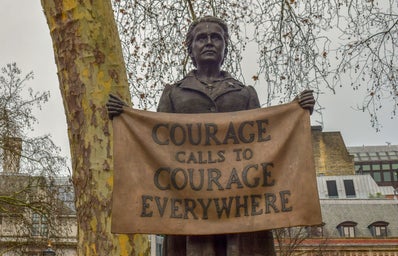Throughout history, women have been seen as the lesser gender. Despite the obstacles that have been pushed against them, they were able to fight against the odds that our patriarchal society encourages. Here are four periods within the 20th and 21st centuries that cemented the implementations of women’s rights.
- The 1900s to 1920s
-
Although the National Woman Suffrage Association and American Women Suffrage Association were formed in 1869 and the National Association of Colored Women’s Clubs in 1896, the 1910s called for the right to vote and other political, economic and social rights for women. On June 4, 1919, the 19th amendment was passed, which granted women suffrage.However, it only applied to white women. Its ratification took place on August 18, 1920. During the First World War, women were able to work within manufacturing and agricultural positions due to the men being called to fight for the war. They also served as nurses, doctors, ambulance drivers and translators. This allowed women to have more freedom and to escape the common stereotype of women being homemakers and domestic workers — especially for African American women.
The invention of electricity and plumbing allowed fewer taxing efforts for women, which gave more time for leisure. The number of unmarried women working increased throughout the 1920s. Flappers, a movement of women who deviated against the social norms of women existed with shorter skirts, hair, cigarettes and makeup. Although most women were not flappers, the attire worn by this group was ever so popular.
- The 1930s to 1950s
-
During the Great Depression, there was still an increasing number of women working — especially since their industries were less impacted by the stock market such as with clerical work, domestic service and teaching. Men were also losing their jobs and marriage rates were decreasing, which led to women having to financially support themselves.
Once again with WWII, women were able to jump right into the workforce to work within male positions, due to men being forced to fight for the war. Work benefits came along with this such as maternity leave, daycare and counseling. Women’s employment grew from 26% in 1939 to 35% in 1943 for women of working age. 90% of single women between 18 and 40 were working.
- The 1960s to 1980s
-
The National Organization for Women lobbying led to the Equal Pay Act of 1963 which took the step of allowing equal pay for women at the same jobs men worked at. It also aided with preventing low wages from deterring a woman from joining the workforce. With the Civil Rights Movement and Voting Rights Act of 1965, African American women were able to exercise their right to vote.
Roe v. Wade in 1973, allowed for the right to abortion which was granted by the right to privacy. In 1974, the Fair Housing Act extended its prohibition of discrimination toward the basis of sex. This allowed women to have more financial independence, especially since most women could only obtain credit with the signature of their husband or father, despite contributing financially. For higher education, starting in the late 1970s, more women than men attended college.
In 1986, Meritor Savings Bank v. Vinson, stated that sexual harassment is a form of sex discrimination through Title VII.
- The 1990s to 2010s
-
The 1990s showcased more women being involved in public office, with 1992 being known as the “The Year of the Woman.” In 1993, Janet Reno became the first woman attorney general in the United States, which occurred during the Clinton Administration. In 1994, the Violence Against Women Act is created to address domestic violence and sexual assault crimes by providing federal resources to combat these forms of violence.
During the 2000s, the major Supreme Court cases Nevada Department of Human Resources v. Hibbes and Jackson V. Birmingham Board of Education were crucial to women’s rights. Nevada Department of Human Resources v. Hibbes allows for an individual to sue a state regarding violations of the Family and Medical Leave Act of 1993 (FMLA). Jackson V. Birmingham Board of Education showcased that an individual couldn’t be disciplined for complaining about sex-based discrimination through Title IX.
In 2009, President Obama signed the Lilly Ledbetter Fair Pay Act, which changed the restricted time period for filing complaints of employment discrimination, primarily for victims of wage discrimination.
In early 2013, Secretary of Defense, Leon Panetta lifted the ban on women serving combat positions in the military, with January 2016 being the deadline for the US Military to implement policy.
2016 showcased black women being the most college-educated group in America, within both race and gender categories. In 2018, Idaho and Utah joined 48 other states in legalizing breastfeeding in public, and the midterm elections led to large gains within the House of Representatives with 117 women being elected. In early 2019, many states such as Alabama, Utah, Georgia and many others made provisions to limit abortion. However, the ACLU was able to challenge these laws, which caused federal judges to block them as a result.
Despite there still being issues with wage gaps, the threat of the overturn of Roe v. Wade and sexual assault, women have protested, fought and lobbied to make the world a better place for future generations to come. Although many may think the fight for women’s rights is over, many women leaders prove that the fight is still important and will still continue as time goes on.



